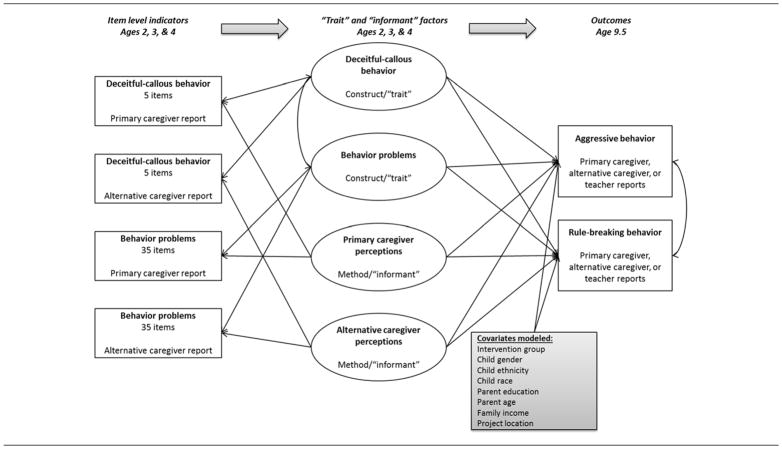Figure 1. Multi-trait multi-method model examining whether early CU behavior (deceitful-callousness) and behavior problem “trait” factors at ages 2, 3, and 4 versus primary and alternative caregiver reported “informant” factors at ages 2, 3, and 4 uniquely predict outcomes at age 9.5.
Note. Item level indicators not shown (for ease of readability): 5 DC behavior items based on Hyde et al. (2013); 35 behavior problems items (Eyberg Scale; Robinson et al., 1980). Prediction by measures assessed at ages 2, 3 and 4 tested in separate models. Within-time correlation between CU behavior and behavior problems factors specified to account for their overlap. We re-ran models controlling treatment status, project location, child gender, race, and ethnicity, family income, and parent education and age – findings unchanged

